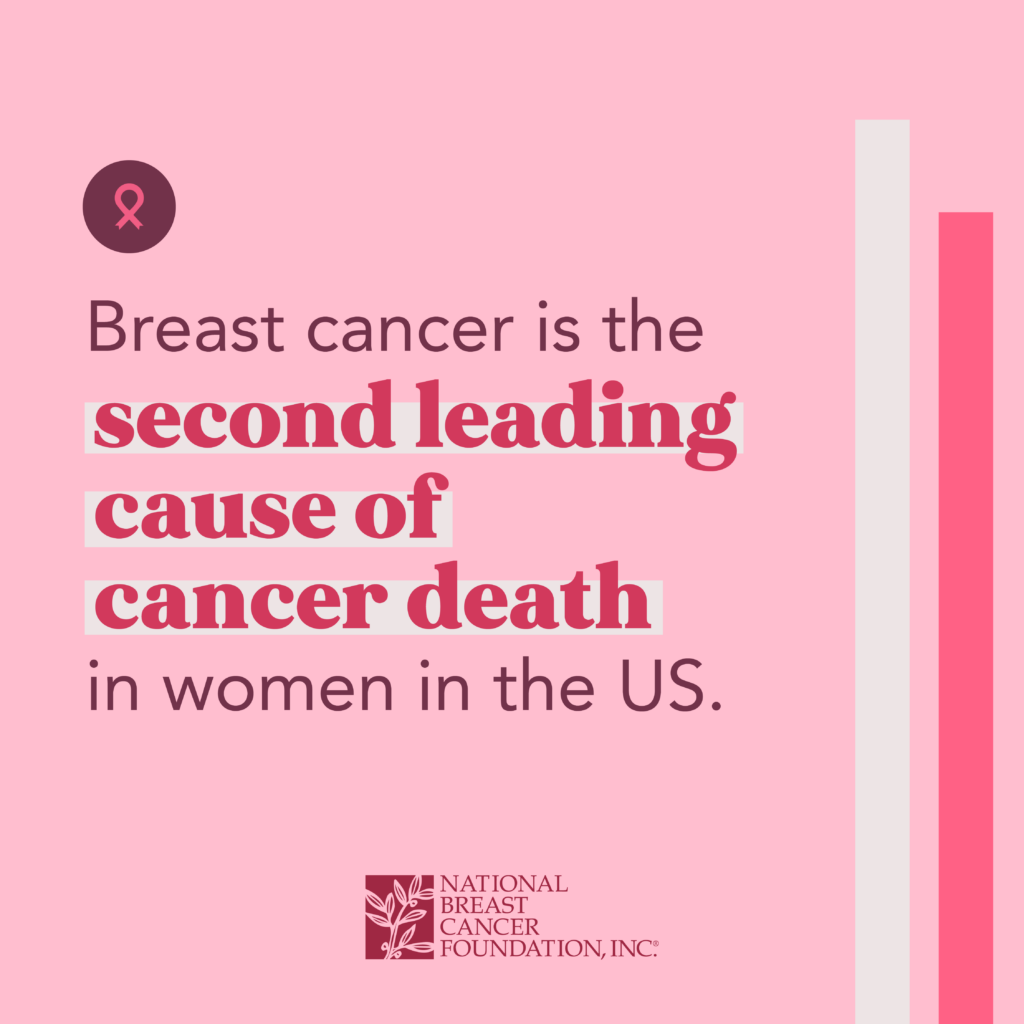All information from the National Breast Cancer Foundation
This is some information from the National Breast Cancer Foundation, but there is much more valuable information to learn about breast cancer risks, symptoms, and more. Please visit https://www.nationalbreastcancer.org/ for additional information.
What is breast cancer?
Breast cancer is a disease in which malignant (cancer) cells form in the tissues of the breast.
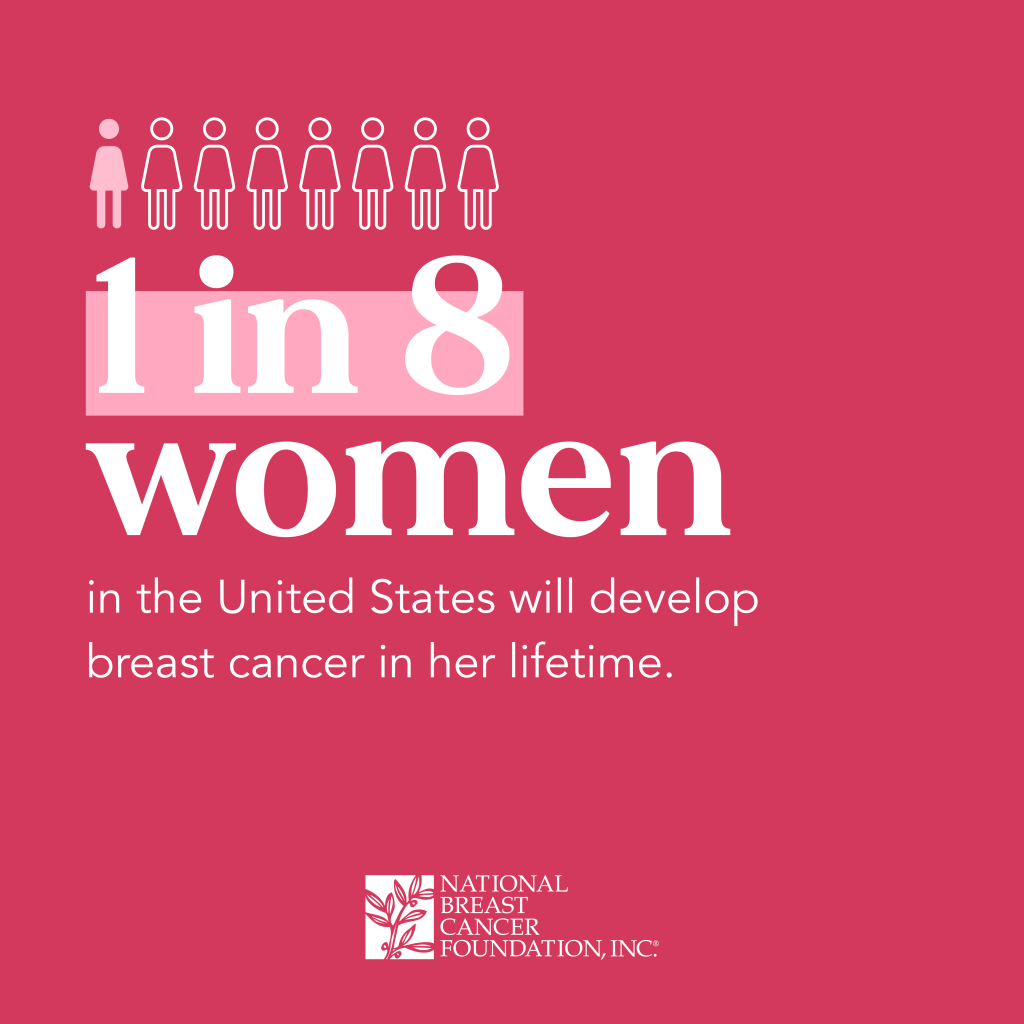
Protect Your Health
Did you know that 1 in 8 women will be diagnosed with breast cancer in her lifetime? While you can’t usually prevent cancer, it is important to be proactive about your health. Get the free Healthy Living and Personal Risk Guide to help you protect your overall health and assess your breast cancer risk online here.
When you’re told that you have breast cancer, it’s natural to wonder what may have caused the disease. But no one knows the exact causes of breast cancer. Doctors seldom know why one woman develops breast cancer and another doesn’t, and most women who have breast cancer will never be able to pinpoint an exact cause.
What we do know is that breast cancer is always caused by damage to a cell’s DNA.

Known Risk Factors
Women with certain risk factors are more likely than others to develop breast cancer. A risk factor is something that may increase the chance of getting a disease. Some risk factors (such as drinking alcohol) can be avoided. But most risk factors (such as having a family history of breast cancer) can’t be avoided. Having a risk factor does not mean that a woman will get breast cancer. Many women who have risk factors never develop breast cancer.
What is BRCA?
The name “BRCA” is an abbreviation for “BReast CAncer gene.” BRCA1 and BRCA2 are two different genes that have been found to impact a person’s chances of developing breast cancer.
Every human has both the BRCA1 and BRCA2 genes. Despite what their names might suggest, BRCA genes do not cause breast cancer. In fact, these genes normally play a big role in preventing breast cancer. They help repair DNA breaks that can lead to cancer and the uncontrolled growth of tumors. Because of this, the BRCA genes are known as tumor suppressor genes.
However, in some people these tumor suppression genes do not work properly. When a gene becomes altered or broken, it doesn’t function correctly. This is called a gene mutation.
BRCA Mutations
A small percentage of people (about one in 400, or 0.25% of the population) carry mutated BRCA1 or BRCA2 genes. A BRCA mutation occurs when the DNA that makes up the gene becomes damaged in some way.
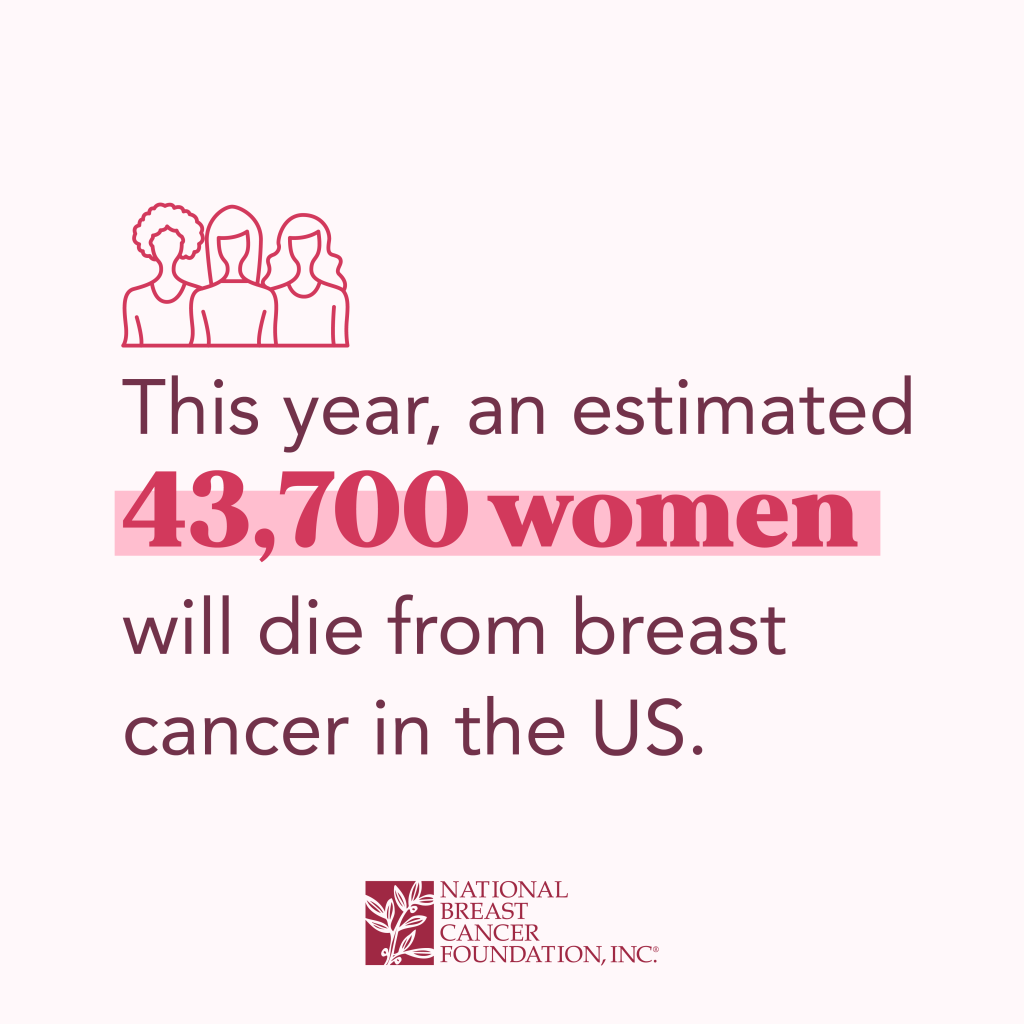
When a BRCA gene is mutated, it may no longer be effective at repairing broken DNA and helping to prevent breast cancer. Because of this, people with a BRCA gene mutation are more likely to develop breast cancer, and more likely to develop cancer at a younger age. The carrier of the mutated gene can also pass a gene mutation down to his or her offspring.
Early Detection
According to the American Cancer Society, when breast cancer is detected early, and is in the localized stage, the 5-year relative survival rate is 99%. Early detection includes doing monthly breast self-exams, and scheduling regular clinical breast exams and mammograms.
It is recommend to learn more about breast self examination to increase chances for early detection.
What Are the Signs and Symptoms of Breast Cancer?
Every person should know the signs and symptoms of breast cancer, and any time an abnormality is discovered, it should be investigated by a healthcare professional.
Most people who have breast cancer signs and symptoms will initially notice only one or two, and the presence of these signs and symptoms do not automatically mean that you have breast cancer.
By performing monthly breast self-exams, you will be able to more easily identify any changes in your breasts. Be sure to talk to your healthcare professional if you notice anything unusual.
What Is a Breast Lump?
A breast lump is a mass, growth, or swelling within the breast tissue. While finding a lump in your breast can be concerning, it is important to remember that the majority of breast lumps are not breast cancer. There are many conditions that may cause benign (non-cancerous) breast lumps. However, all breast lumps should be investigated by a healthcare professional.
While breast lumps should be checked and monitored by a healthcare professional, it is important to note that the absence of a noticeable breast lump does not mean breast cancer cannot or has not developed. Beginning at age 40, all women should receive an annual mammogram, and women over the age of 18 should perform a monthly breast self-exam.
What Does a Breast Lump Feel Like?
A breast lump often feels like a solid or thick spot in or around the breast tissue, or in the underarm area. A breast lump will be noticeably more solid than the surrounding breast tissue.
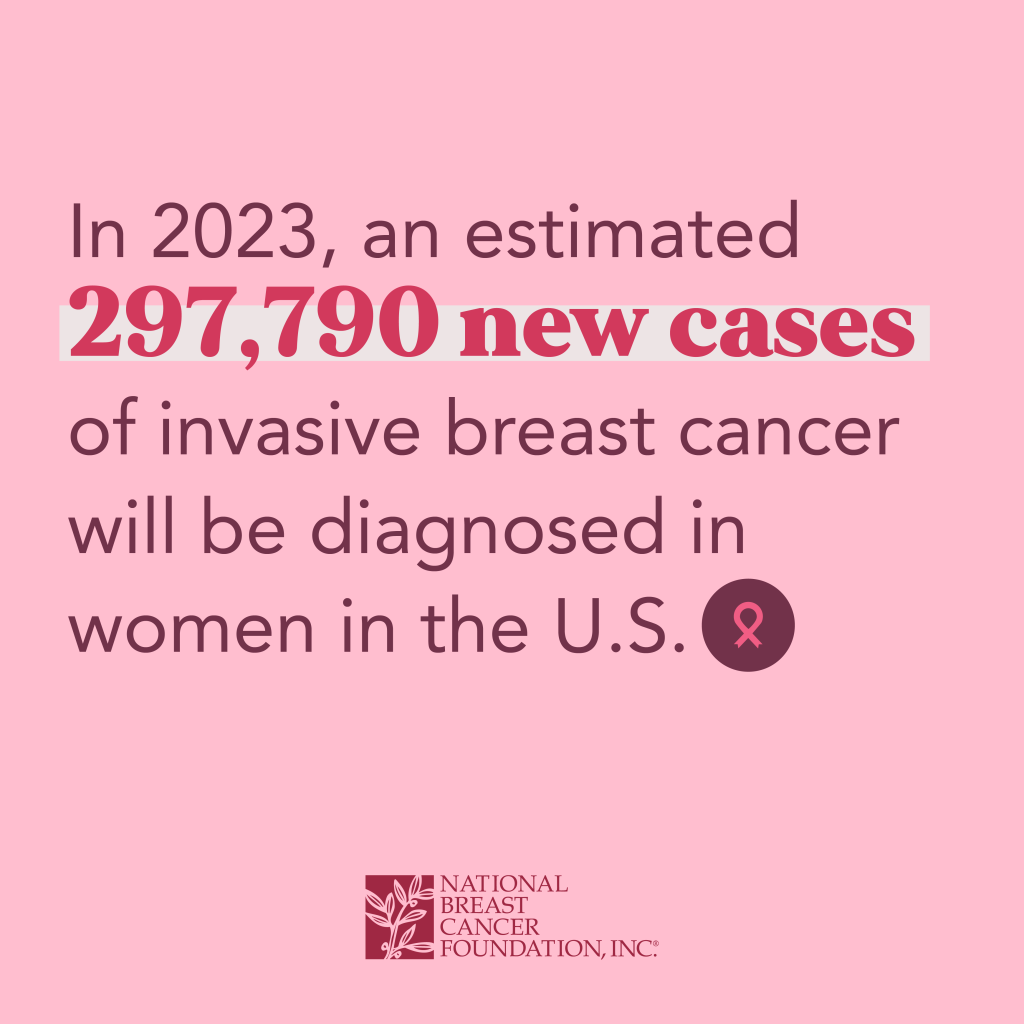
Breast lumps can vary in size, shape, and feel. Some may be the size of a pea, while others may be larger than a golf ball. Breast lumps may feel round, smooth, and moveable, or may be hard, jagged, and stationary. Breast lumps may be present in one or both breasts.
Some breast lumps may cause pain or discomfort, but many do not. A painful breast lump is not necessarily a sign of breast cancer, but should be looked at by a healthcare professional.
What Is a Breast Cyst?
A cyst in the breast may feel like a lump, but upon examination the lump is a small, generally harmless sac filled with fluid rather than a cancerous or benign lump of cells.
You may have one cyst or many cysts that appear together. Cysts are more common in premenopausal women and can cause localized pain. Usually they feel like a grape and are relatively soft in texture.
How Would I Know The Lump Is A Cyst And Not A Tumor?
A healthcare professional can determine whether a lump is a cyst or tumor. A simple ultrasound scan placed against the skin will allow the healthcare professional to see whether the lump appears solid or hollow and filled with fluid. If the lump is fluid-filled, it may require no treatment at all. You may notice that the cyst comes and goes depending on the hormone cycle of menstruation.
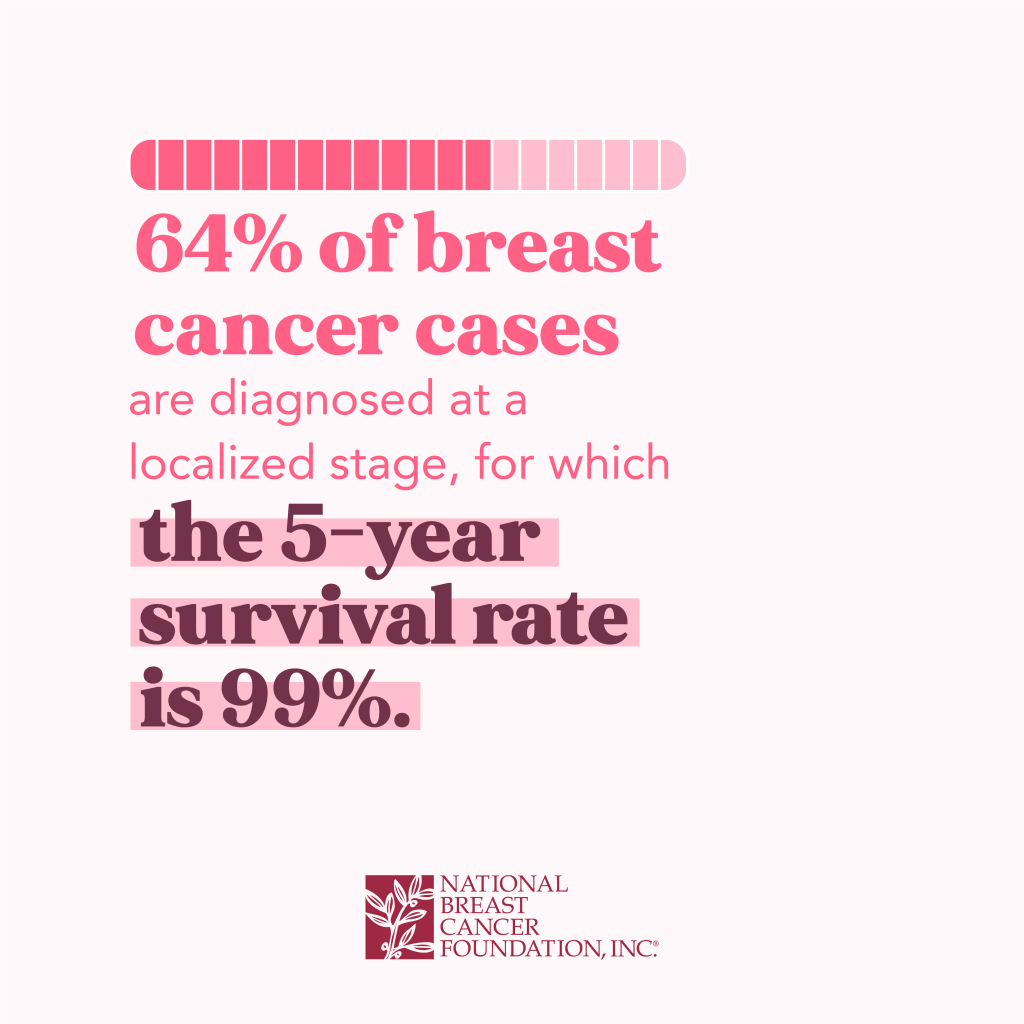
A solid mass doesn’t always mean it is cancer. The shape of the mass will help tell the radiologist what it likely is. A mass that is hard to the touch and has jagged edges could be cancer. Ultrasound imaging and additional imaging using X-Ray, called spot imaging, can help the radiologist differentiate shapes of masses.
What Is a Breast Self-Exam?
A breast self-exam is an early detection tool that uses a combination of physical and visual examinations of the breasts to check for signs and symptoms of breast cancer. The purpose of a breast self-exam is to become familiar with the way your breasts normally look and feel.
Knowing how your breasts normally look and feel, also called breast self-awareness, will help you identify any changes or abnormalities in your breasts, such as a new lump or skin changes. Any changes in your breasts discovered during a breast self-exam should be reported to your healthcare provider right away.
While a breast self-exam is a useful tool for the early detection of breast cancer, it should not take the place of regular mammograms and clinical breast exams.
How Often Should a Breast Self-Exam Be Performed?
Adult women of all ages are encouraged to perform breast self-exams at least once a month. Lillie D. Shockney, Johns Hopkins University Distinguished Service Professor of Breast Cancer states, “Forty percent of diagnosed breast cancers are detected by women who feel a lump, so establishing a regular breast self-exam is very important.”
For women still menstruating, a breast self-exam should be performed a few days after her period ends. For those who are post-menopausal, a breast self-exam should be performed on the same day of each month, such as the 1st or 15th day of the month.
While mammograms can help you to detect cancer before you can feel a lump, breast self-exams help you to be familiar with how your breasts normally look and feel. Alert your healthcare professional if you notice any changes in your breasts, such as a new lump, sore spot, changes in the appearance of the skin, or nipple discharge.
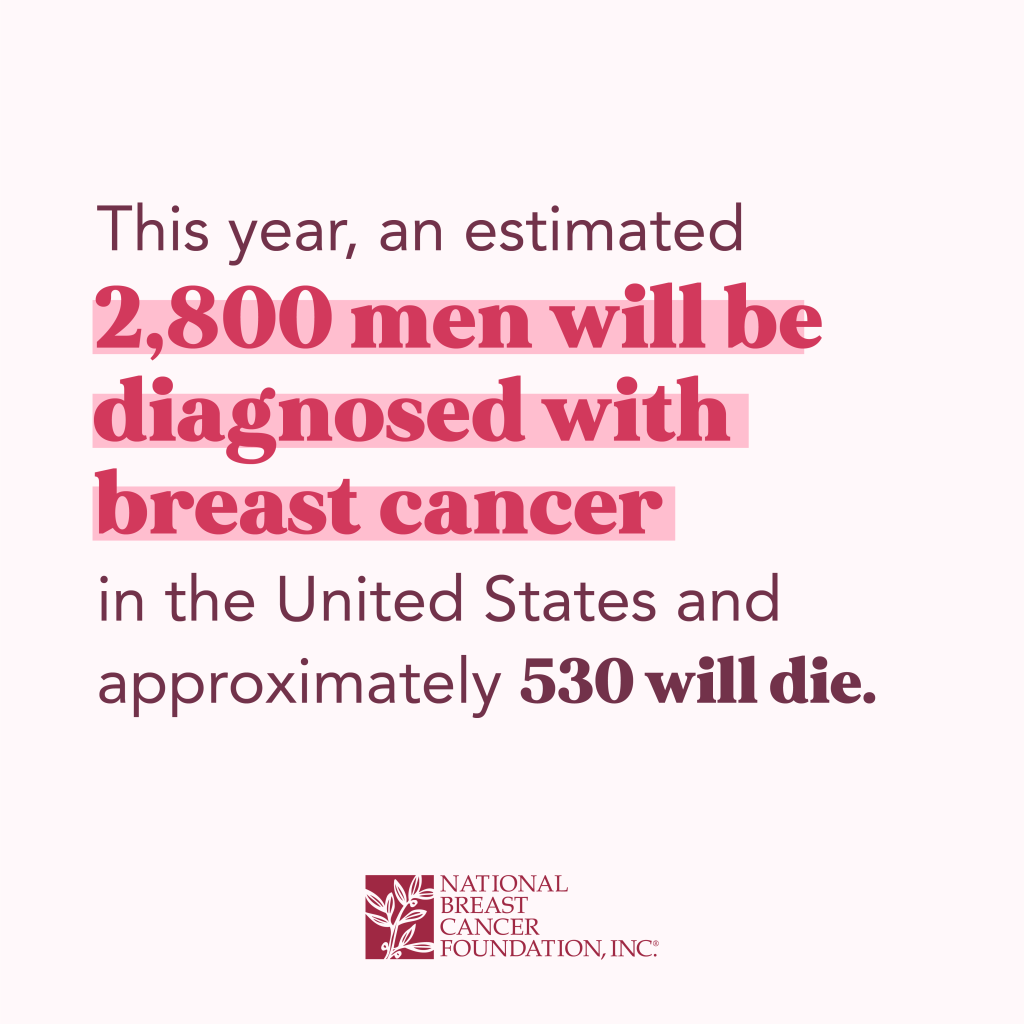
Male Breast Cancer
All people, whether male or female, are born with some breast cells and tissue. Even though males do not develop milk-producing breasts, a man’s breast cells and tissue can still develop cancer. Even so, male breast cancer is very rare. Less than one percent of all breast cancer cases develop in men, and only one in a thousand men will ever be diagnosed with breast cancer.
Breast cancer in men is usually detected as a hard lump underneath the nipple and areola. Men carry a higher mortality than women do, primarily because awareness among men is less and they are less likely to assume a lump is breast cancer, which can cause a delay in seeking treatment. The majority of men diagnosed are over the age of 50.
Infiltrating Ductal Carcinoma
Of the men who develop breast cancer, the vast majority of those cases are Infiltrating Ductal Carcinoma (IDC), which means cells in or around the ducts begin to invade surrounding tissue. Very rarely, a man might be diagnosed with inflammatory breast cancer or Paget disease of the nipple, which is Ductal Carcinoma In Situ (DCIS) contained within the nipple and usually areola.
Risk Factors
- Radiation exposure
- High levels of the hormone estrogen
- Family history of breast cancer, especially breast cancer that is related to the BRCA2 gene.
Signs & Symptoms
Male breast cancer can exhibit the same symptoms as breast cancer in women, including a lump. Anyone who notices anything unusual about their breasts, whether male or female, should contact their physician immediately.
Most men find their own lump while in the shower and it is usually located underneath the nipple and areola. It is common for men to delay reporting the lump to a physician which can result in the patient requiring more treatment.
Nearly all breast cancer in men is estrogen receptor positive with treatment including hormonal therapy, just as it does for 70% of women.
Survival rates and treatment for men with breast cancer are very similar to those for women. Early detection of breast cancer increases treatment options and often reduces the risk of dying from breast cancer.
Genetic Testing
Although treatment outcomes are very similar to women at the same stage of detection, a man diagnosed with breast cancer should also consider seeing a genetics counselor for a consultation. If a man tests positive for a defective gene (most commonly either BRCA1 or BRCA2) that can lead to a future diagnosis of breast cancer and his children have a 50% chance of carrying the gene. In addition:
- A male child of a man with breast cancer who inherits the defective BRCA2 gene has only approximately 6% chance of eventually developing breast cancer and just over 1% with BRCA1.
- A female child of a man with breast cancer who inherits the defective gene has a risk between 40% and 80% of eventually developing breast cancer.
- Men with a genetic predisposition to breast cancer (carrying BRCA2 gene mutation) are also at higher risk of getting prostate cancer at a younger age than usually diagnosed, as well as being at higher risk for melanoma and pancreatic cancer.
